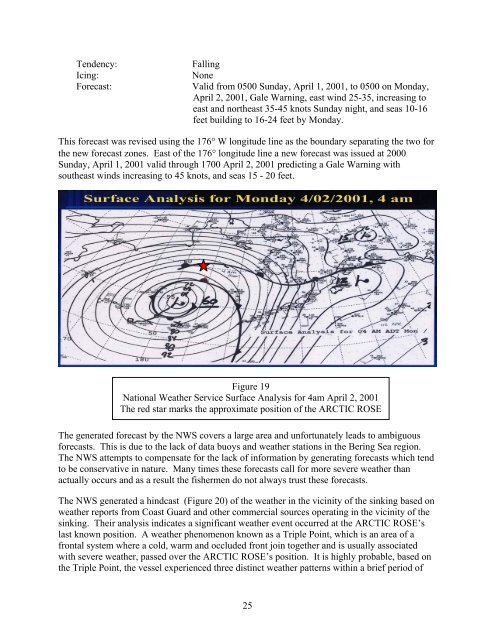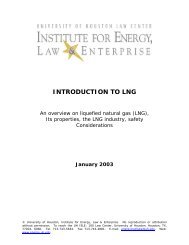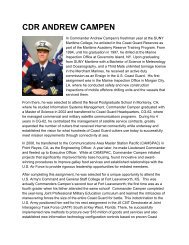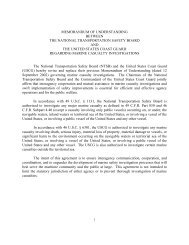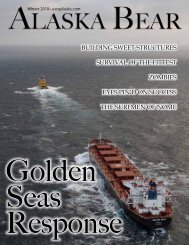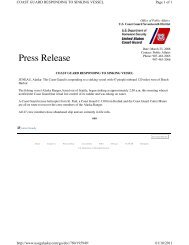marine board report - Off Soundings
marine board report - Off Soundings
marine board report - Off Soundings
Create successful ePaper yourself
Turn your PDF publications into a flip-book with our unique Google optimized e-Paper software.
Tendency:<br />
Icing:<br />
Forecast:<br />
Falling<br />
None<br />
Valid from 0500 Sunday, April 1, 2001, to 0500 on Monday,<br />
April 2, 2001, Gale Warning, east wind 25-35, increasing to<br />
east and northeast 35-45 knots Sunday night, and seas 10-16<br />
feet building to 16-24 feet by Monday.<br />
This forecast was revised using the 176° W longitude line as the boundary separating the two for<br />
the new forecast zones. East of the 176° longitude line a new forecast was issued at 2000<br />
Sunday, April 1, 2001 valid through 1700 April 2, 2001 predicting a Gale Warning with<br />
southeast winds increasing to 45 knots, and seas 15 - 20 feet.<br />
Figure 19<br />
National Weather Service Surface Analysis for 4am April 2, 2001<br />
The red star marks the approximate position of the ARCTIC ROSE<br />
The generated forecast by the NWS covers a large area and unfortunately leads to ambiguous<br />
forecasts. This is due to the lack of data buoys and weather stations in the Bering Sea region.<br />
The NWS attempts to compensate for the lack of information by generating forecasts which tend<br />
to be conservative in nature. Many times these forecasts call for more severe weather than<br />
actually occurs and as a result the fishermen do not always trust these forecasts.<br />
The NWS generated a hindcast (Figure 20) of the weather in the vicinity of the sinking based on<br />
weather <strong>report</strong>s from Coast Guard and other commercial sources operating in the vicinity of the<br />
sinking. Their analysis indicates a significant weather event occurred at the ARCTIC ROSE’s<br />
last known position. A weather phenomenon known as a Triple Point, which is an area of a<br />
frontal system where a cold, warm and occluded front join together and is usually associated<br />
with severe weather, passed over the ARCTIC ROSE’s position. It is highly probable, based on<br />
the Triple Point, the vessel experienced three distinct weather patterns within a brief period of<br />
25


